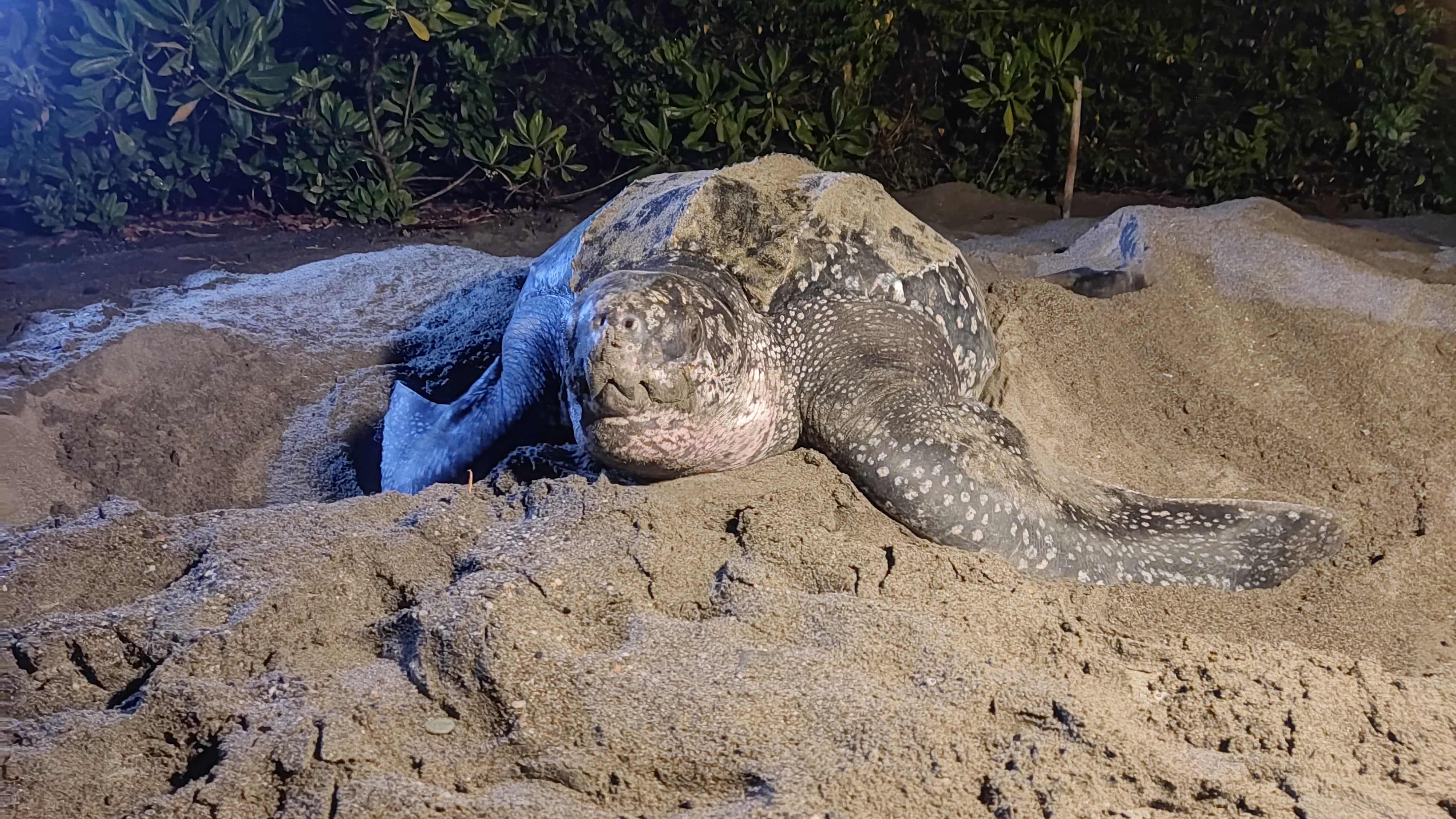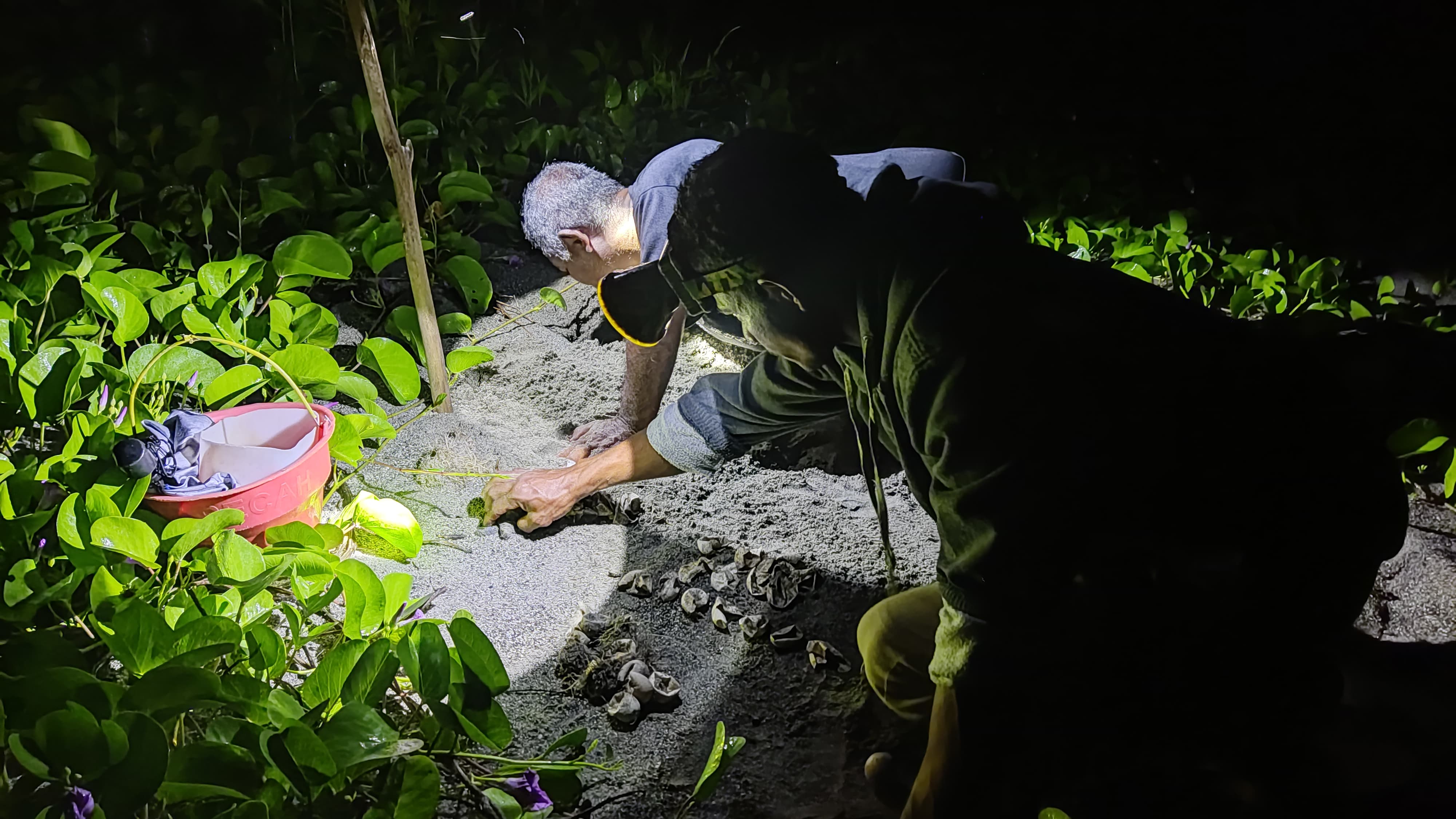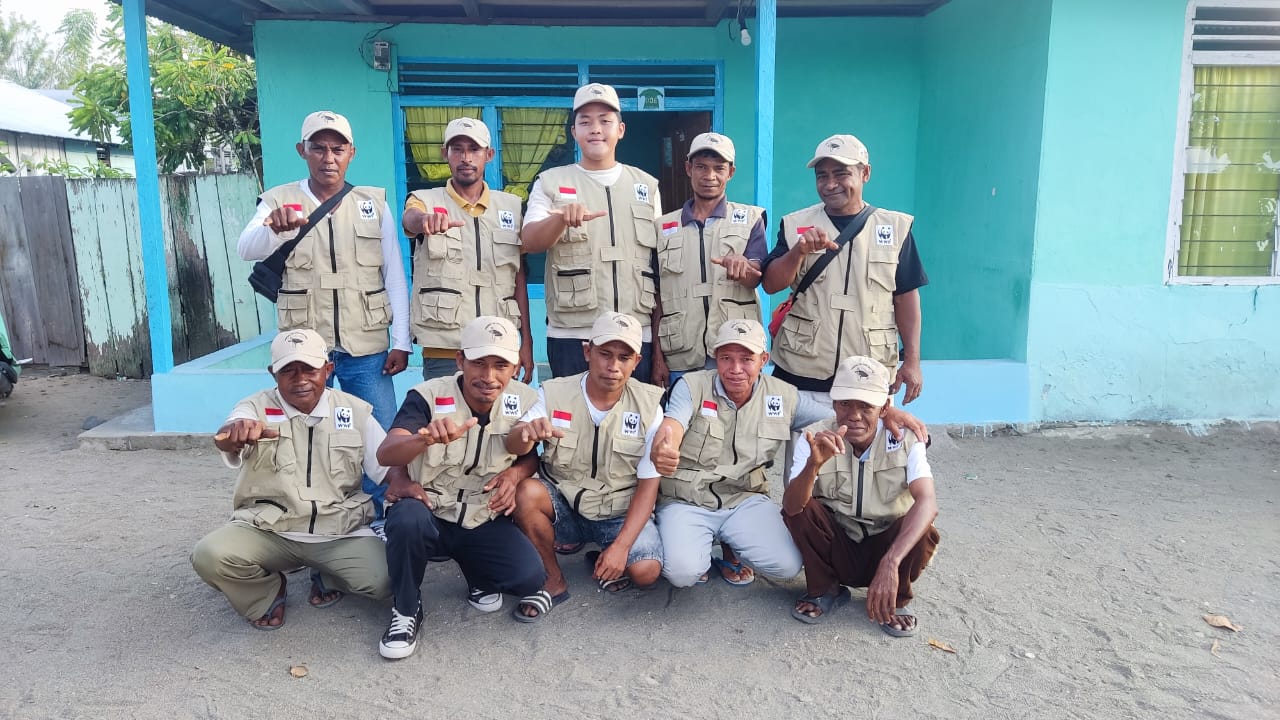ONCE TRIPPED UP, NOW GUARDED: THE STORY OF THE LEATHERBACK TURTLE ON BURU ISLAND
Not many people know that behind the serenity of Buru Island, famous for producing eucalyptus oil, lies a natural paradise that witnessed the birth of an ancient sea giant: the leatherback turtle. On a sandy beach nearly 14 kilometers long in the Fena Leisela sub-district of Maluku, every year these giant turtles come from thousands of kilometers away to lay their eggs. It is home to the second largest leatherback turtle nesting beach in Indonesia, after Jeen Womom in West Papua, an almost forgotten natural masterpiece.
Not only leatherback turtles, the area is also an important habitat for Olive Ridley, Green and Hawksbill turtles. The local people know the leatherback turtle as teteruga salawaku, teteruga means turtle, while salawaku is a traditional Moluccan shield with a black-and-white pattern that resembles the pattern on the leatherback turtle's carapace. Unfortunately, the story of the relationship between humans and turtles here is not always harmonious.

The Leatherback Turtle nesting beach in Fena Leisela, Buru Island has now been guarded by a Community Watch Group to prevent eggs from being stolen.
In the past, the night of the full moon was a time that children and adults looked forward to. They flocked to the beach to collect turtle eggs. "One night we could get a sack full," recalls Ali Wayolu (72), a resident of Wamlana Village. It has become a habit for the people of Buru Island to consume turtle eggs. They believe that turtle eggs increase male stamina and vitality.
Not stopping there, poaching of leatherback turtle mothers has also been rampant. In the 1970s, poachers from Haruku Island (Central Maluku region) came to Fena Leisela, hunting turtles and processing the meat into jerky to be sold in Ambon. Each night, they could hunt up to 20 leatherback turtle mothers. However, the hunt did not last long because local residents were infuriated by the stench of turtle carcasses left to rot on the beach. One day, the furious community set fire to a jerky processing plant and the hunters left.
But hunting has not completely stopped. Migrants and some locals still consumed turtle meat until the early 2000s. Finally, 2017 became a turning point when WWF-Indonesia together with local authorities started conservation efforts in this area with support from NOAA through WWF-US. Education, dialog with the community, and the involvement of local leaders began to pave the way for change.
There was resistance to conservation efforts. WWF enumerators in the field experienced various forms of harassment: stoning, obstruction, and even fear. However, the commitment to save sea turtles did not waver.
Slowly, awareness grew. The people of Fena Leisela began to realize that sea turtles are an important part of a healthy ocean, and their existence must be preserved for future generations. Since 2021, four coastal villages, Wamlana, Waspait, Waekose, and Waenibe, have passed village regulations prohibiting all forms of sea turtle utilization.

The process of monitoring leatherback turtle nests that have hatched, this monitoring is done to determine the success rate of leatherback turtle eggs that have hatched.
.
The results are remarkable, the turtle nest theft rate which previously reached 94%, has now dropped dramatically to 3% in the last five years, the average number of leatherback turtle nests in Fena Leisela reached 199 nests. Since 2022, the rate of leatherback sea turtle nest theft has reached 0%, proving that the sea turtle conservation program in Fena Leisela has begun to have a positive impact on the survival of leatherback sea turtles in Fena Leisela.

The Monitoring Team or Pokmaswas Sugiraja Watulu which guards the leatherback turtle nesting beach on Buru Island..
The Sugiraja Watulu Community Watch Group (Pokmaswas), formed in 2021, now actively monitors coastal ecosystems, from nesting beaches to illegal fishing activities. This collective effort makes conservation a shared movement.
Now, the story of leatherback turtles on Buru Island is no longer about poaching, but about hope. Hope that Fena Leisela beach can become a pilot center for leatherback turtle conservation in the future. Hope that our children and grandchildren will still be able to see my teteruga salawaku climbing back onto the sand with a size as big as a dining table, laying eggs under the moonlight, now that leatherback turtles are no longer tripped up, but guarded.





